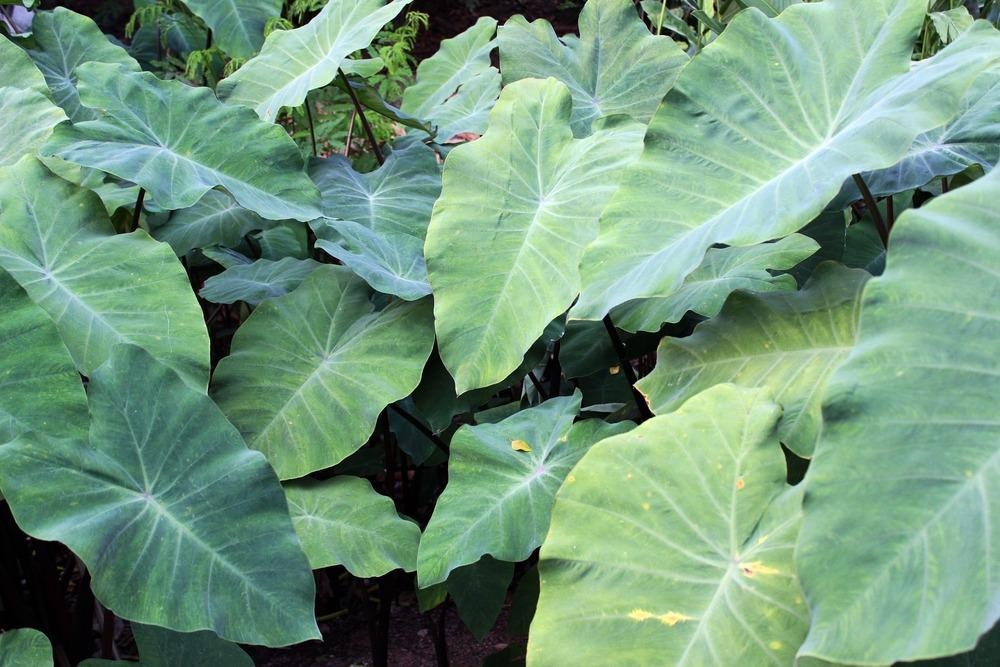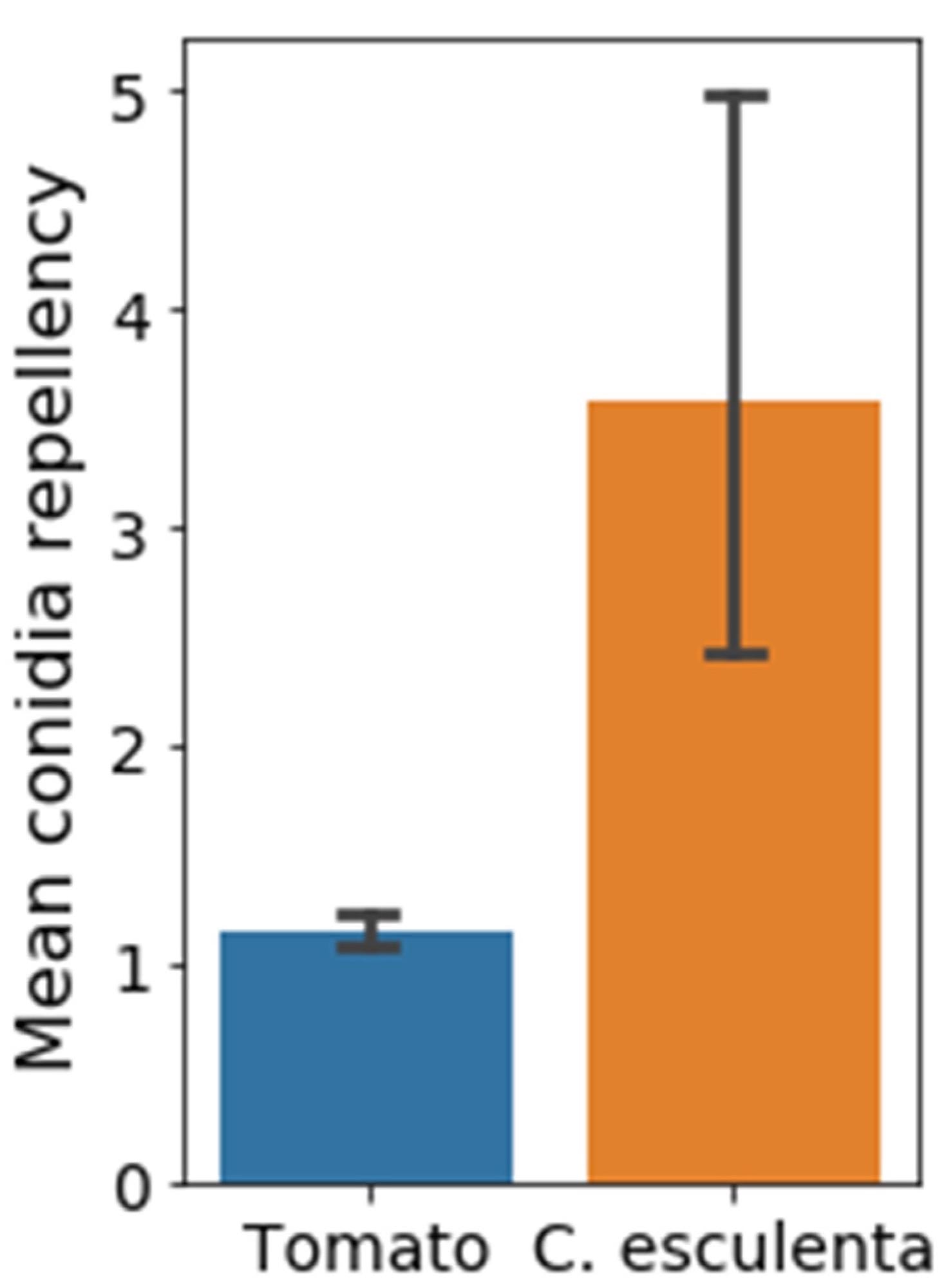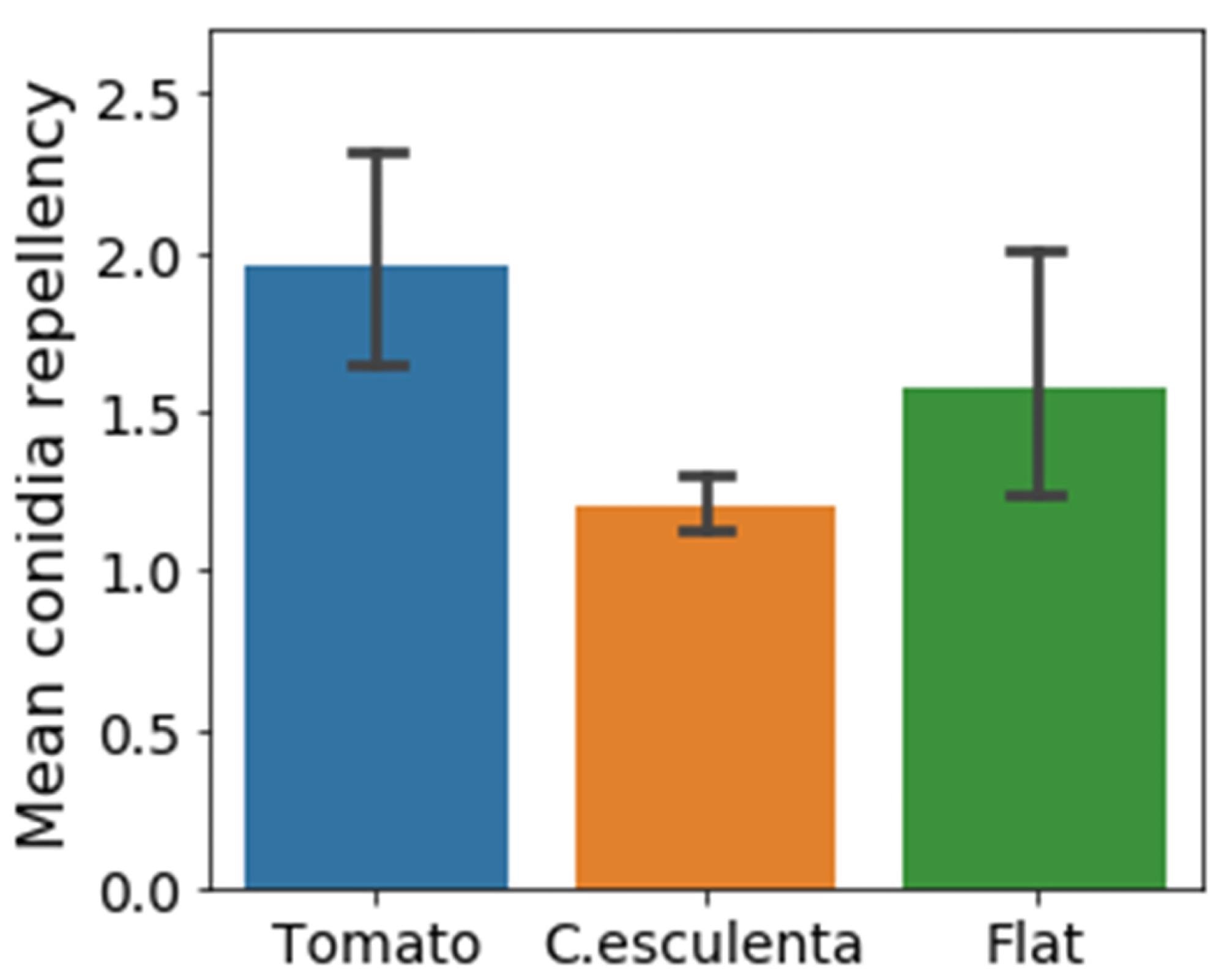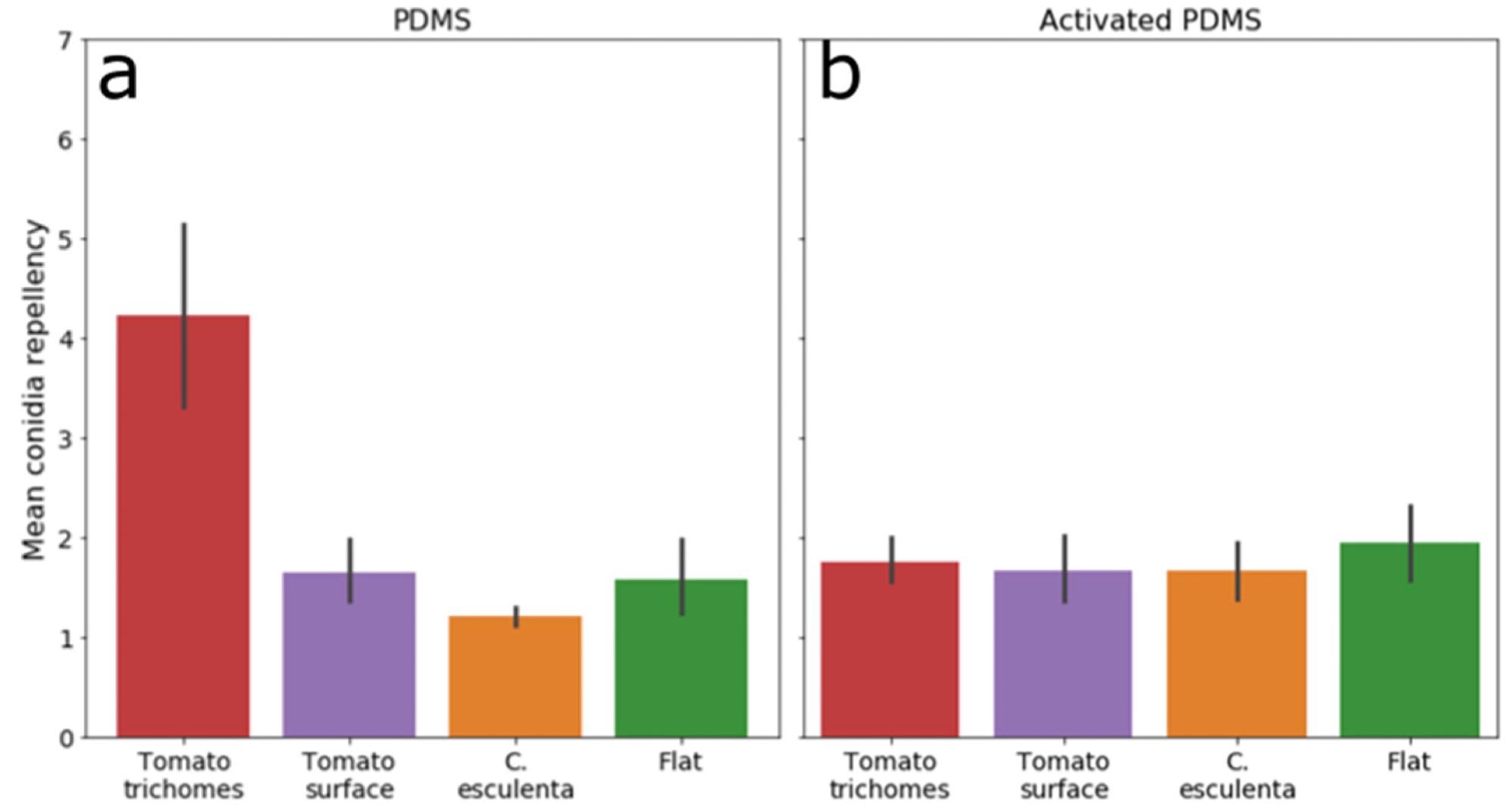 By Surbhi JainReviewed by Susha Cheriyedath, M.Sc.Apr 4 2022
By Surbhi JainReviewed by Susha Cheriyedath, M.Sc.Apr 4 2022In an article recently published in the open-access journal Materials, researchers discussed the effect of hydrophobicity and microstructure on conidia repellence in self-cleaning biomimetic surfaces.

Study: Self-Cleaning Biomimetic Surfaces—The Effect of Microstructure and Hydrophobicity on Conidia Repellence. Image Credit: Jupeter/Shutterstock.com
Background
Food loss during post-harvest processing has significant economic, societal, and environmental consequences. Phytopathogenic molds are one of the most common causes of post-harvest food deterioration. Botrytis cinerea (B. cinerea) and other phytopathogenic fungi are a major source of worry for agricultural systems. Airborne conidia spread these molds, which pollute surfaces and infect plants and fresh produce, resulting in considerable losses.

Conidia repellency of two natural surfaces. C. esculenta leaves and tomato leaves were tested for their conidia repellency. Conidia repellency represents the number of conidia counted before wash, divided by the number of conidia counted after wash (BW/AW) on the same surface. Pairs comparison was conducted using Student’s t-test. Conidia repellency values of C. esculenta leaves (3.57 ± 0.69) were significantly higher than those of tomato leaves (1.15 ± 0.04) (p < 0.01, Bars represent STD). Image Credit: Alon, H et al., Materials
Food rotting can be reduced significantly by developing novel functional surfaces with fungal repellent qualities. Surface coating is one method of achieving this. The fundamental disadvantage of many coatings is their susceptibility to scratching and deterioration, particularly in non-toxic materials used in food packaging or greenhouses. Surface structuring is a non-chemical method of creating surfaces with various physical qualities.
Natural surfaces are a prominent source of inspiration for creating structured surfaces with various qualities. Biomimetics is the study of synthetic designs that are inspired by nature. There are two major approaches to creating such structured surfaces: building the topography on top of the surface (bottom-up approach) or scraping the surface inwards to generate the appropriate topography (top-down approach). Poly(dimethyl siloxane) (PDMS) is the most extensively used polymer in soft lithography. Many surfaces, particularly bioinspired PDMS-based surfaces, have been researched for anti-biofouling activity over the years.
About the Study
In this study, the authors established a workable technique for fabricating biomimetic self-cleaning surface structures for agricultural applications such as greenhouse cover screens and post-harvest packing materials. The adhesive properties of natural and synthetic microstructures were studied, and the ability of structured biomimetic surfaces to easily get rid of the fungal conidia was investigated.
The researchers prepared the PDMS replications of Colocasia esculenta (elephant ear) and Solanum lycopersicum (tomato) leaves by using soft lithography. The ratios between applied and remaining conidia were analyzed using microscope imaging after B. cinerea conidia were applied on the natural surfaces for a washing procedure.

Conidia repellency ability of synthetic surfaces. Conidia repellency values of three PDMS surfaces: C. esculenta and tomato leaf replicas (orange and blue respectively) and flat surface (green) as a control for a structure less surface with the same chemical properties. Pairs comparison was conducted using Student’s t-test, α was adjusted using Bonferroni correction. The microstructure of tomato leaves seemed to induce significantly higher conidia repellency values (1.9 ± 0.18) than the texture of C. esculenta leaves (1.2 ± 0.05) (p < 0.01). Image Credit: Alon, H et al., Materials
For biomimetics of leaf surface microstructure, the authors used soft lithography as a reproduction method. The simple, biomimetic, and economical conidia repellent surfaces were prepared for application in agriculture, particularly post-harvest. B. cinerea was employed as a model for a pathogenic pervasive fungus, as well as surface model C. esculenta for a leaf with proven self-cleaning capabilities, and tomato as a natural host for B. cinerea.
For hydrophobicity and conidia washing capacities, the leaves and their corresponding synthetic PDMS, activated PDMS-derived microstructural replications, and structureless PDMS surfaces were evaluated.
The team performed measurements and analysis of apparent contact angles of natural and manufactured surfaces, including activated (hydrophilic) surfaces, to investigate the effect of hydrophobicity. Two real leaves were used as templates for biomimetic structures created with PDMS soft lithography. The capacity of differently structured surfaces with different chemical properties (hydrophobicity levels) was investigated to wash conidia.
Observations
The dust-repellent C. esculenta leaves had a higher conidia-repellency than tomato leaves, which were notorious for their high sensitivity to phytopathogenic molds. Microstructure replication was not in sync with the mirror conidia repellency in nature, and conidia repellency was influenced by a variety of factors, including microstructure and hydrophobicity.
There was no link discovered between the apparent contact angle of the surface and conidia repellency, indicating that washing ability was influenced by microstructure and hydrophobicity. A microscale sub-surface (tomato trichromes) was also discovered to have a high conidia-repelling power, which illustrated the importance of non-superhydrophobic microstructures. The conidia washing ability could not be explained just by microstructure or hydrophobicity. In addition, a unique microstructure in the shape of tomato trichomes was discovered that might be exploited as a conidia repellent structure in a hydrophobic state.

Washing efficiency of all synthetic surfaces separating trichomes from the rest of the surface. Summarization of washing efficiencies of all synthetic surfaces examined in this study. (a) PDMS surfaces, (b) Activated PDMS surfaces. Trichomes were counted separately from the rest of the tomato surface (red and purple bars, respectively). Only hydrophobic trichomes had washing efficiency significantly higher than all other surfaces. Image Credit: Alon, H et al., Materials
No significant relationship between surface washing efficiency and conidia density was discovered, which implied that the conidia adherence studied here is at the initial stage, determined by physical adhesion forces. No link between conidia repellency and surface hydrophobicity was found, as measured by the apparent contact angle. There was no link between conidia adhesion and surface hydrophobicity in B. cinerea. The conidia repellency found in the natural system could not be replicated by microstructural replication.
Conclusions
In conclusion, this study elucidated the self-cleaning capacity of natural leaves to better understand the relationship between conidia washing ability, microstructure, and hydrophobicity on surfaces. Under particular chemical conditions, it was discovered that certain microstructures could produce synthetic surfaces having conidia repellency properties.
The authors emphasized that more research is needed to find the best topographical dimensions, based on the principle that the distance between microstructure grooves should be within the size of conidia. They mentioned that other fungi may have different interactions due to the great variety of forms and features of diseases. They also believe that future research into conidia-driven mechanisms on micro-scale surfaces could lead to more effective self-cleaning surface microstructures.
Disclaimer: The views expressed here are those of the author expressed in their private capacity and do not necessarily represent the views of AZoM.com Limited T/A AZoNetwork the owner and operator of this website. This disclaimer forms part of the Terms and conditions of use of this website.
Source:
Alon, H., Vitoshkin, H., Ziv, C., et al. Self-Cleaning Biomimetic Surfaces—The Effect of Microstructure and Hydrophobicity on Conidia Repellence. Materials 15(7) 2526 (2022). https://www.mdpi.com/1996-1944/15/7/2526